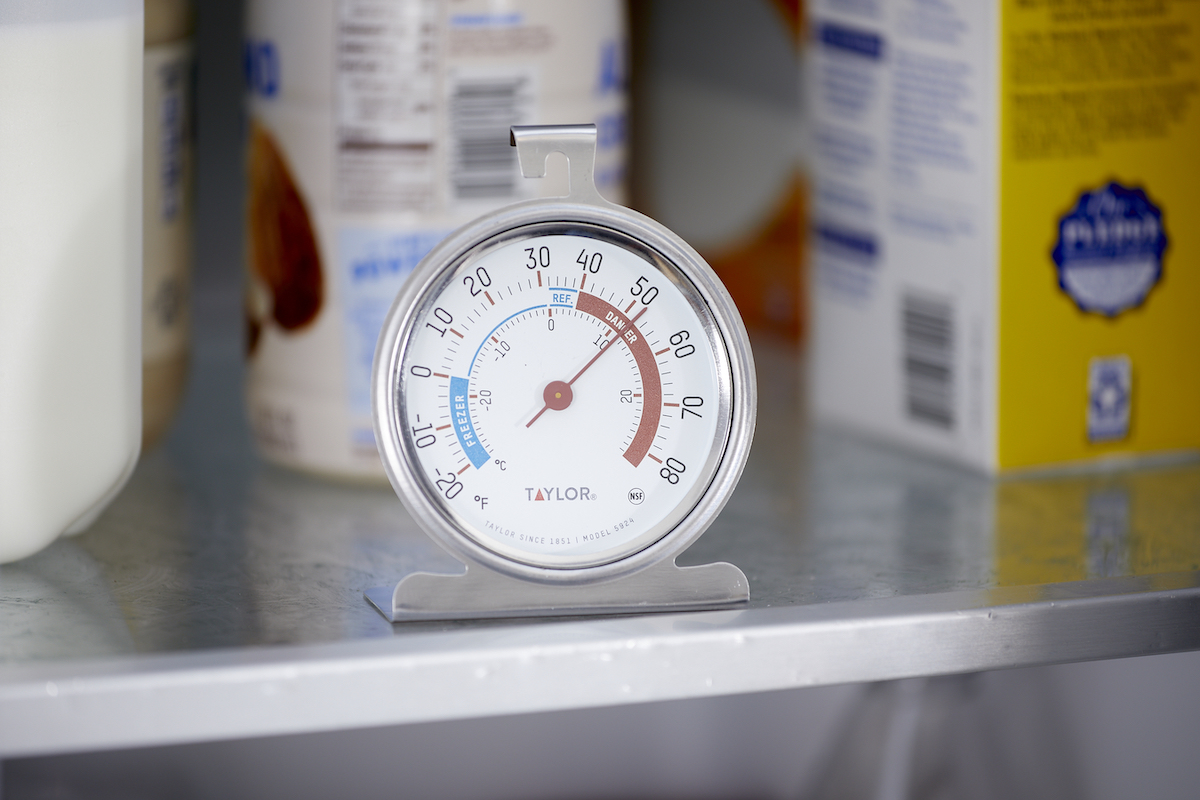

We may earn revenue from the products available on this page and participate in affiliate programs. Learn More ›
Q: I’m worried that my refrigerator is not cooling. I just pulled out a can of soda that’s barely cold, and I noticed my milk is also warmer than it should be. Why is my refrigerator not cooling properly? Do I have to call a repairman, or is there something I can do to fix it?
A: While some refrigerator cooling problems require professional assistance, don’t call the repairman just yet. You might be able to fix it yourself. It’s certainly worth a shot, too, since the average professional service call can run $150 or more.
Start by noting strange refrigerator noises like scraping, which might indicate a problem with the condenser fan. Check to see if the freezer is working but not the fridge, as it may only be the refrigerator compartment on the fritz. Depending on the cause of your fridge not cooling or freezer not freezing, the following tips might help.
Make sure your refrigerator has power.
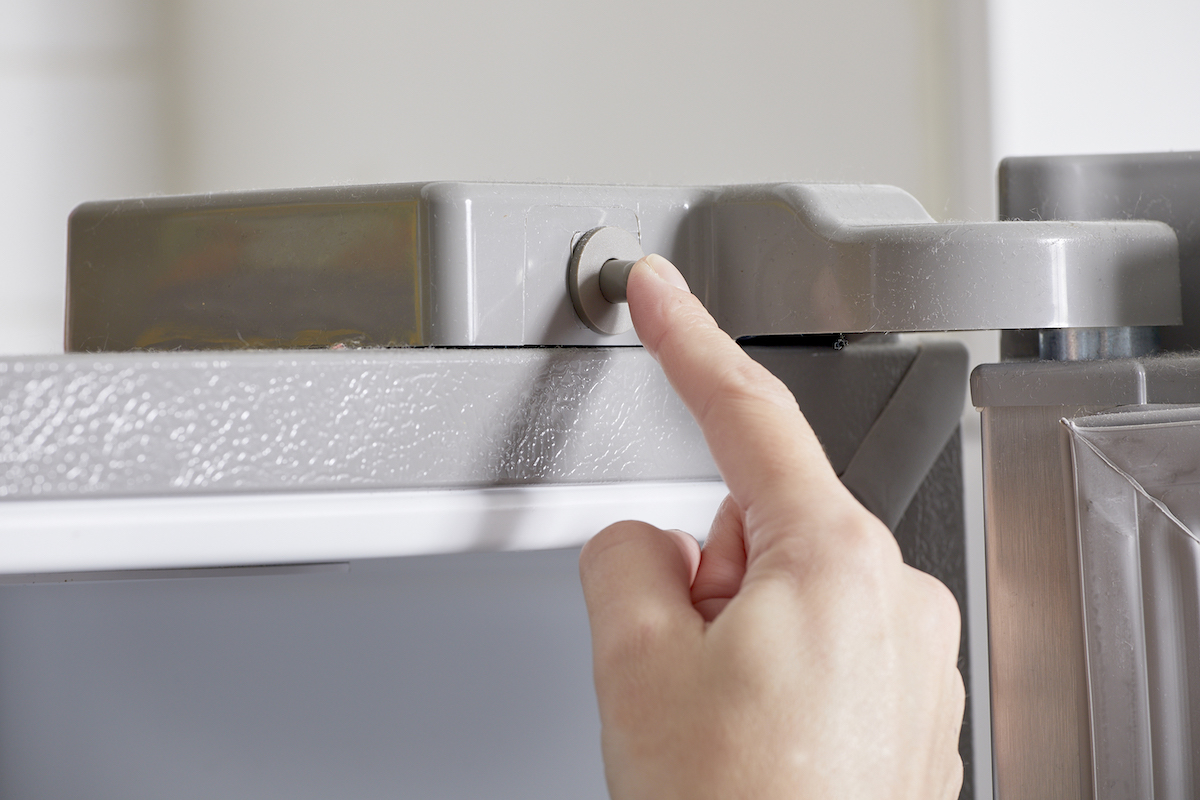
A power cord that has worked loose in its outlet or a flipped breaker will shut the entire fridge down. Here’s how to troubleshoot this common issue:
- Open the refrigerator door. If the light comes on, the fridge has power and you can move onto other possible solutions.
- If the fridge compartment light doesn’t come on, ensure the power cord is firmly plugged into the wall outlet and check for the light again.
- If there is still no light, check your main electrical panel for a flipped breaker. Switch it back on if necessary.
Consult your owner’s manual for brand-specific troubleshooting.
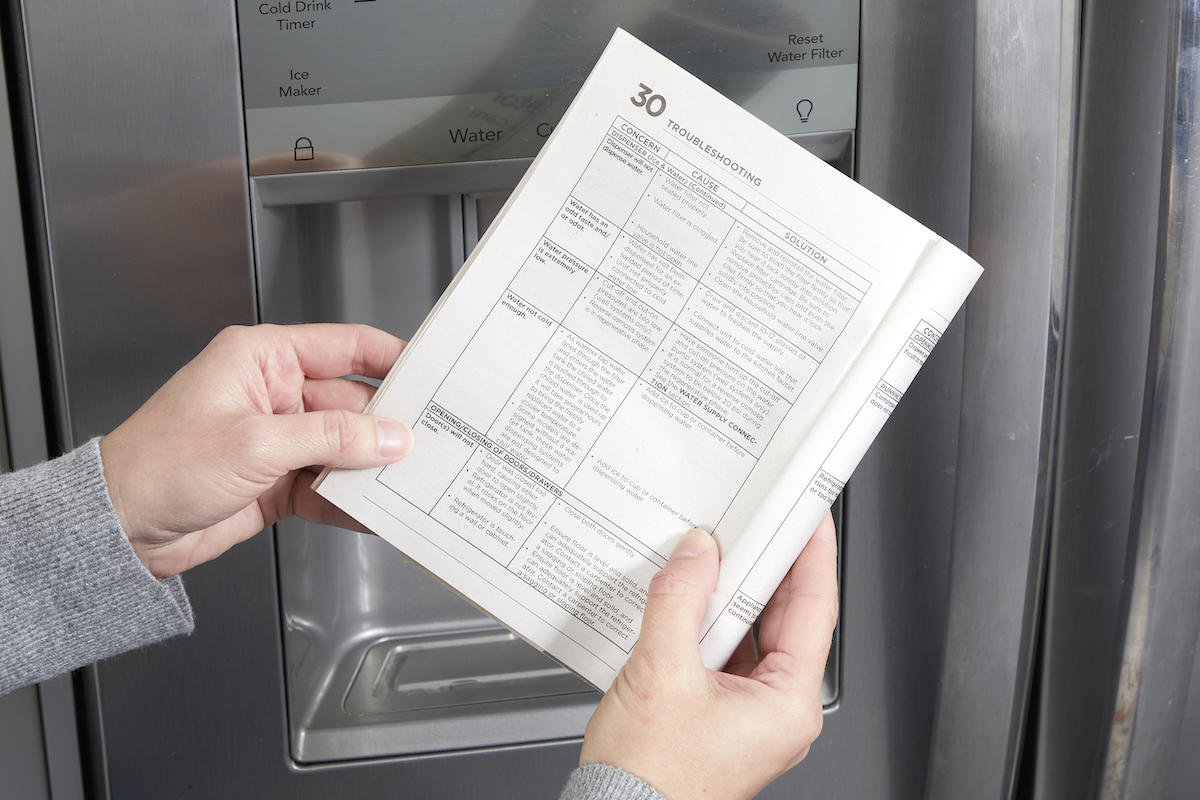
When dealing with any brands of refrigerators not getting cold, there might be simple, brand-specific solutions. Peruse your appliance’s user manual for relevant refrigerator troubleshooting steps, tips, and error codes.
Common causes for a refrigerator not cooling likely addressed by your user manual may include:
- New refrigerators with both compartments set to the correct temperatures take some time to cool. If a freshly installed GE refrigerator’s not cooling immediately, the manufacturer recommends giving its models up to 24 hours to get cold, but this cooling period can range widely between brands.
- The refrigerator may be set to demo mode (sometimes called cooling off, shop, or display mode). Turning off this setting differs from model to model. As an example, an LG refrigerator not cooling when set to this mode may display “OF” and “F” where the freezer and refrigerator temperature settings normally go. Most LG fridges will exit demo mode and begin cooling if the “Refrigerator” and “Ice Plus/Lock” buttons are held simultaneously for 5 seconds.
- Your fridge may be too close to nearby walls and cabinets for proper airflow. For both Whirlpool and Samsung refrigerators not cooling due to installation location, the manufacturers recommend at least 1 inch of clearance behind and above a unit, and ½ inch to each side.
Check the refrigerator thermostat settings.
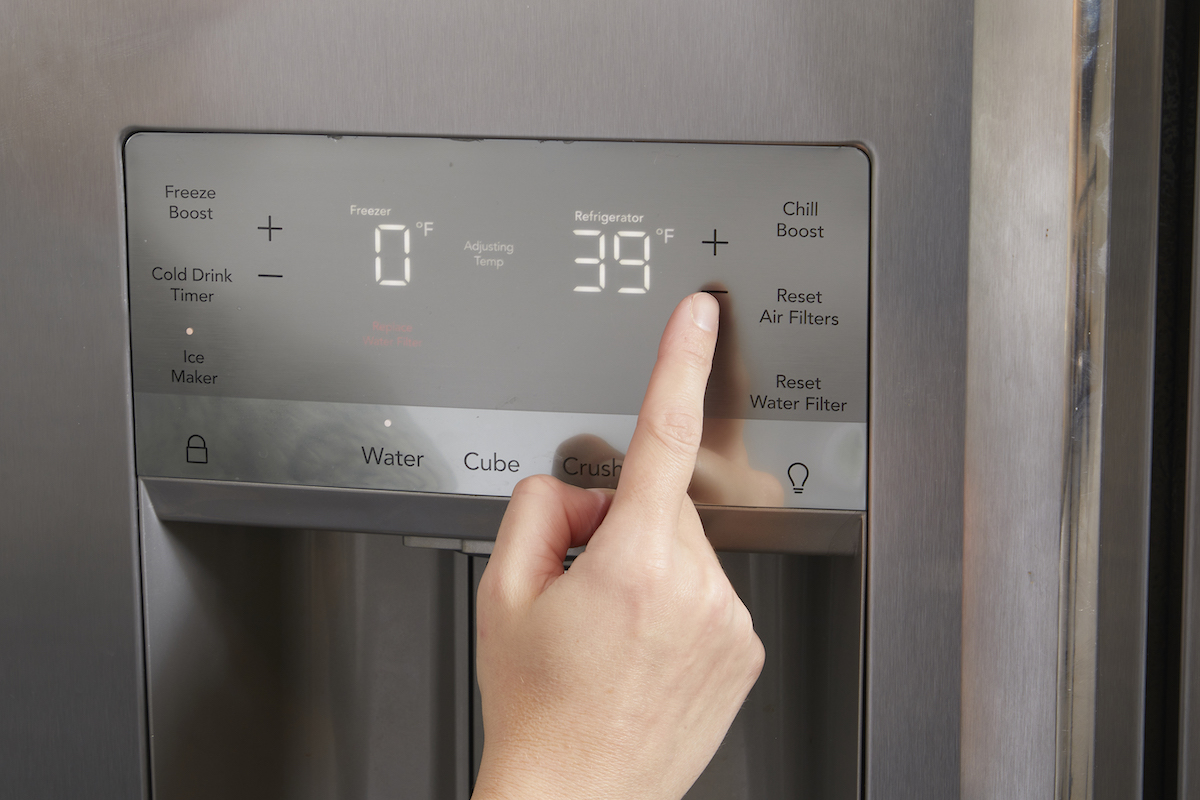
New refrigerators usually come preset at temperatures of around 37 degrees Fahrenheit for the fridge compartment and 0 degrees Fahrenheit for the freezer compartment, the ideal fridge temperature settings.
Thermostat dials inside the fridge and freezer can be accidentally adjusted when inserting and removing items, though. Exterior digital thermostats can also be inadvertently changed by little fingers or by leaning or brushing against the control panel. Many digital panels come with the ability to lock the settings for just those reasons. Whether the temperature controls are located inside or outside, reset them to the settings recommended by your fridge’s user manual if need be.
If you don’t trust the temperature readings you’re getting, or if your old fridge lacks a thermostat, consider purchasing a low-cost refrigerator thermostat to test the temperature yourself.
Test your fridge door seals.
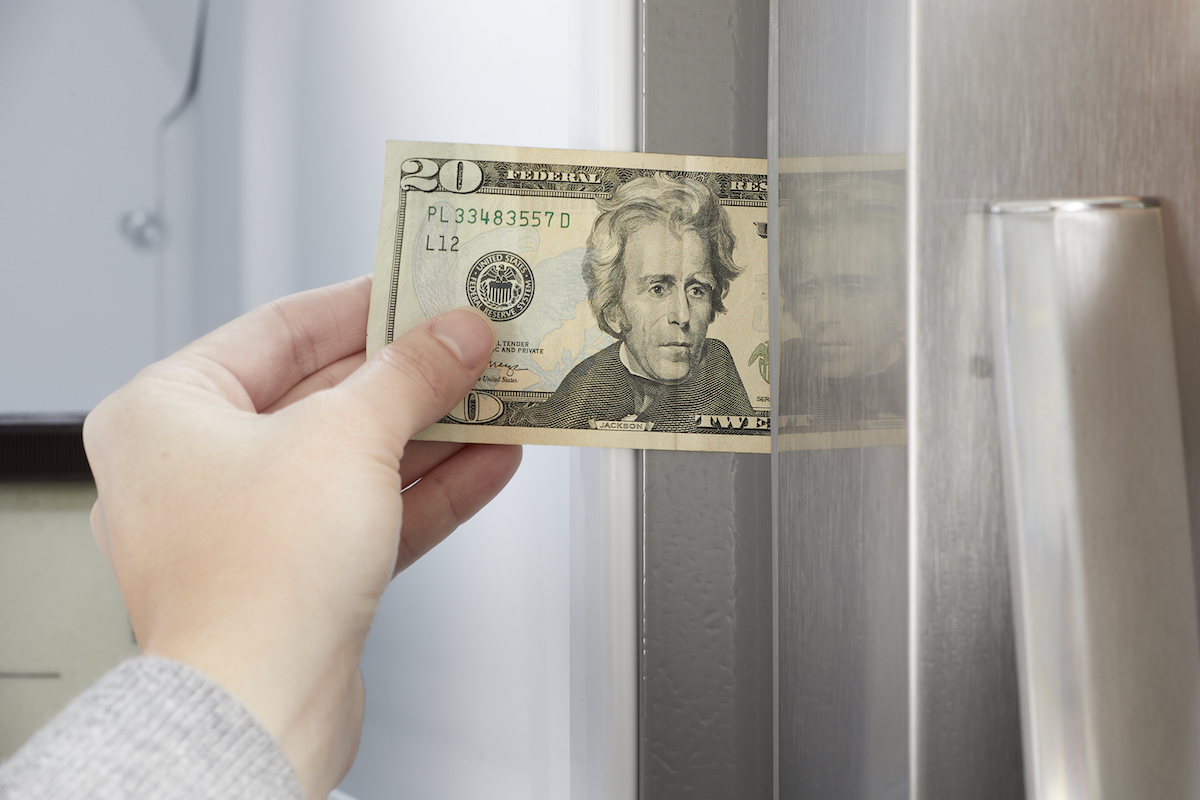
If the magnetic seals or door gaskets on the fridge doors are defective, cool air could be escaping the appliance. Refrigerator door gaskets can grow brittle over time, reducing their ability to form a tight seal. You can test your fridge’s seals using just a dollar bill.
- Grab a dollar and open the fridge door.
- Hold the dollar bill in place where the gasket and refrigerator meet and close the door.
- Pull out the dollar without opening the door.
- If you feel resistance when removing the dollar, the seal is still working. If the bill slips out easily, however, you’ll need to replace the door gaskets.
Replacing the gaskets is relatively easy for DIYers. Refrigerator door gasket prices range from around $25 to $85—or more, depending on the brand and model. Check your owner’s manual to ensure you pick the correct replacement gaskets, and look for detailed installation directions in the manual or replacement gasket package’s instructions.

Ensure the refrigerator is level.
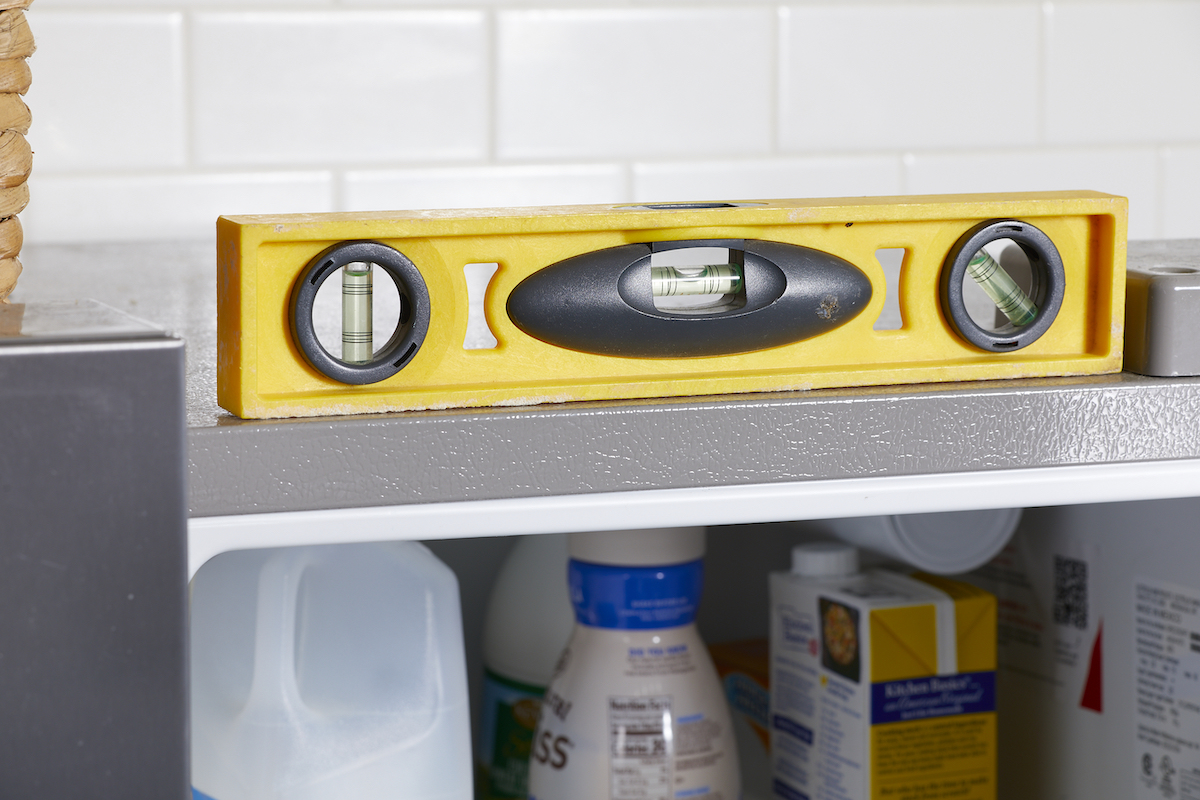
A relatively new fridge with good door seals can still leak and fail the above dollar-bill test when the appliance isn’t level. If a refrigerator is leaning in the wrong direction, its doors may not seal tightly enough to keep cold air in.
Set a carpenter’s level on top of the fridge. If the bubble is not centered in the glass tube, adjust the refrigerator’s front legs. Most refrigerator legs can be adjusted with an Allen wrench or adjustable pliers. Consult your owner’s manual for detailed instructions on how to level your appliance.
Clean the condenser coils.
Your fridge contains condenser coils filled with refrigerant. Over time, these coils—which are not in a sealed unit—can become caked with dust, hair, or pet fur, which reduces their cooling ability. Fortunately, cleaning refrigerator coils is simple, requiring only a $10 condenser coil brush and a vacuum to suck up loosened dust. If you find significant buildup on the coils, clean them once or twice annually to keep your fridge cooling properly.
Check to make sure nothing is blocking the air vents.

Cold air circulates through vents running between the refrigerator’s freezer and refrigerator compartments. If an item blocks that airflow, it can result in warmer temperatures in the fridge compartment. Depending on your fridge’s brand and model, its vents could be located along the back or sides of the interior walls. Check your owner’s manual if you have trouble locating them, and double-check your unit for these issues:
- Cramming too much food in too tight of a space is a common cause of a refrigerator not cooling, as items grouped tightly near a vent can block airflow. Keeping plenty of food products in your fridge helps it maintain a cool temperature, but don’t pack the compartment so tightly that air can’t circulate easily from shelf to shelf.
- Frost buildup in the freezer also can block vents, reducing or preventing cold air from reaching the refrigerator compartment. If the fridge is not cooling but the freezer works and the latter compartment is heavily frosted over, unplug the fridge and defrost the freezer. Once it melts, plug the fridge back in and allow it to cool properly. It can take an entire day for a heavily frosted freezer to defrost, so plan to store perishable food items in a suitable cooler or a neighbor’s fridge, if possible.
Inspect for problems after a recent power outage.
You’ll know the cause of a fridge not getting cold when your home loses power, and your refrigerator may take a while to reset and cool after an outage. Some refrigerators might need extra user input after a power outage, so refer to your fridge’s manual for specific steps on how to get yours back up and running once power is restored.
If all else fails, call a repairman.
If none of the above refrigerator troubleshooting tips work, the cause might be a defective mechanical component. While it isn’t too difficult to replace some refrigerator components, pinpointing the exact problem can be tricky and require specialized equipment.
The refrigerator compressor, compressor fan, or defrost thermostat might need replacing, which should be undertaken by a licensed professional. If your fridge is still under warranty, note that DIY part replacements may void the warranty. Some service and parts might be so costly that you’re better off replacing a refrigerator that’s stopped cooling, but that should be a last-ditch option.
Final Thoughts
With a little luck and troubleshooting, you can figure out why your fridge is not cooling and potentially solve the problem with a simple fix, like thinning out items to avoid airflow blockage, checking that the appliance has power, or adjusting temperature settings and model-specific functions. You also might learn how to clean refrigerator condenser coils or replace door gaskets on your own in the process. In most cases, though, leave mechanical part replacements to an appliance service pro.
If all else fails, you may find that it’s time to replace your fridge. To avoid that, do all you can to maintain this important kitchen workhorse and extend how long your refrigerator lasts.
FAQs
If the freezer works but the fridge is not cold, it could be that the damper control that lets cold air into the fridge is broken. The same goes for the fridge’s evaporator fan motor or evaporator coils, upon which frost can build up. A defective thermistor, which monitors the fridge’s temperature, might be the issue. Or it could be a simpler problem, like blocked ventilation to the fridge compartment or worn-out door gaskets letting out cold air.
During peak usage times, like holidays or when having company over, lower the refrigerator temperature by about 1 degree Fahrenheit to account for more items and time spent with the fridge door open.
Compressors are what make refrigerators’ trademark humming sound. If you hear your fridge compressor running but not cooling, pull the unit away from the wall and unplug it. Search the user manual for how to activate “Off” or “Zero” settings and set your fridge and freezer to those settings accordingly. Plug in the unit back and set the compartments back to the correct temperature settings. Give the fridge about 24 hours to cool.
If you hear the refrigerator compressor making odd noises, turning off and on more frequently than usual, or not staying on as long as it should, you might need a replacement. Another way to know if your refrigerator compressor is bad is if the fridge feels warmer to the touch than usual when it’s running.
